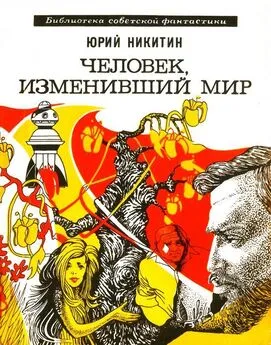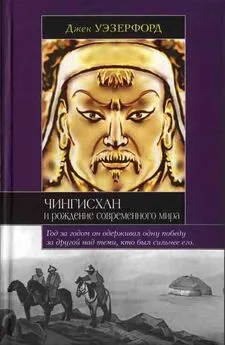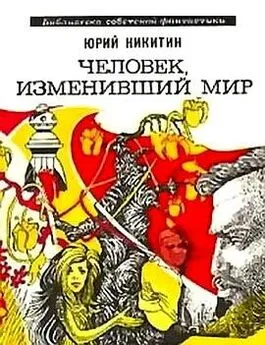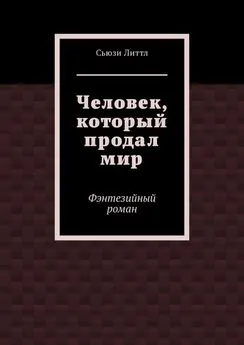Фрэнк Маклинн - Чингисхан. Человек, завоевавший мир
- Название:Чингисхан. Человек, завоевавший мир
- Автор:
- Жанр:
- Издательство:АСТ
- Год:2019
- Город:Москва
- ISBN:978-5-17-095186-4
- Рейтинг:
- Избранное:Добавить в избранное
-
Отзывы:
-
Ваша оценка:
Фрэнк Маклинн - Чингисхан. Человек, завоевавший мир краткое содержание
Чингисхан. Человек, завоевавший мир - читать онлайн бесплатно ознакомительный отрывок
Интервал:
Закладка:
498
Slavery under the Mongols is much misunderstood. Usually they had bond slaves, and nothing similar to the system pre-1861 in the Southern States of the USA existed.
499
Vladimirtsov, Le regime social pp. 80–82.
500
Нируны — «собственно монголы», дарлекины — «монголы вообще», морлоки — гуманоиды-каннибалы, живущие под землей, персонажи жанра фантастики. — Прим. пер .
501
For the Nirun/Durlukin distinction see Erdmann, Temudschin pp. 194–230.
502
For a survey of the vast change see Khazanov, Nomads pp. 128, 132–133, 148–152; Cribb, Nomads in Archaeology pp. 45–49.
503
Asimov & Bosworth, History of Civilizations iv part 1 pp. 243–259.
504
Barfield, Perilous Frontier p. 192.
505
SHO pp. 212–213; SHR pp. 152–154; SHC pp. 162–166.
506
Pelliot, 'Notes sur le "Turkestan",' pp. 27–31; F. W Cleaves, A Chancellery Practice and the Mongols in the Thirteenth and Fourteenth Centuries,' Harvard Journal of Asiatic Studies 14 (1951) pp. 493–526 (esp. pp. 517–521); E. Haenisch, 'Weiterer Beitrag zum Text der Geheimen Geschichte der Mongolen,' Zeitschrift der deutschen Morgenlandischen Gesellschaft in (1961) pp. 139–149 (at pp. 144–149).
507
Atwood, Encyclopedia p. 298.
508
SHO pp. 213–219; SHR pp. 155–161; SHC pp. 166–171.
509
Pelliot, 'Notes sur le "Turkestan",' pp. 28–31; Mostaert, Sur quelques passages pp. 244–249, Edouard Chavannes, 'Inscriptions et pieces de la chancellerie chinoise de l'epoque mongole,' T'oung Pao 5 (1904) pp. 357–447 (at pp. 429–432); Yule & Cordier, Ser Marco Polo pp. 379–381.
510
JB I p. 31; Dawson, Mongol Mission pp. 26, 32–33; Jackson & Morgan, Rubruck p. 31.
511
SHO pp. 203, 214; SHR p. 157.
512
Hsiao, The Military Establishment of the Yuan Dynasty (Harvard 1978) pp. 33–35; T. Allsen, 'Guard and Government in the Reign of Grand Khan Mongke, 1251–59,' Harvard Journal of Asiatic Studies 46 (1986) pp. 495–521; Charles Melville, 'The keshig in Iran,' in Komaroff, Beyond the Legacy pp. 135–165.
513
JB I p. 40.
514
Rachewiltz, Commentary pp. 877–878.
515
Lech, Mongolische Weltreich p. 98.
516
В русском переводе «Сокровенного сказания» речь идет не о воинах, а о юртах (§ 242). Здесь также указано, что Чингисхан дал 10 000 юрт матери и отчигину, самому младшему брату отца Даритаю. — Прим. пер .
517
SHC p. 175; SHO p. 225; SHR pp. 166–167.
518
JB I pp. 42–43; Barthold, Turkestan pp. 392–393 For the Korean land settlement see Henthorn, Korea p. 195.
519
F. Schurman, 'Mongolian Tributary Practices in the Thirteenth Century,' Harvard Journal of Asiatic Studies 19 (1956) pp. 304–389. A possible defence of Genghis is his oft declared tenet that leaving the succession to the one who emerged as most able would inevitably result in civil war, and this was best avoided by fixed inheritances (JB I p. 186).
520
Peter Jackson, 'From Ulus to Khanate: The Making of the Mongol States/ in Amitai-Preiss & Morgan, Mongol Empire pp. 12–38 (at pp. 35–36); Jagchid & Hyer, Mongolia's Culture p. 355.
521
Яргучи — судьи по гражданским делам. — Прим. пер .
522
The director of the bureau of political commissars was Belgutei (Buell, Dictionary pp. 15–16, 123–124, 166, 170, 224–225, 254, 279).
523
Дарухачи — наместники. — Прим. пер .
524
John Masson Smith, 'Mongol and Nomadic Taxation/ Harvard Journal of Asiatic Studies 33 (1970) pp. 46–85; D. O. Morgan, 'Who Ran the Mongol Empire?' Journal of the Royal Asiatic Society 10 (1982) pp. 124–136; F. W Cleaves, 'Daruya and Gerege / Harvard Journal of Asiatic Studies 16 (1953) pp. 235–279.
525
For some of these problems see Biran, Qaidu pp. 69–77; Barthold, Four Studies I pp. 128–131.
526
JB II pp. 579–583; RT II pp. 406–409.
527
Christopher Atwood, 'Ulus, Emirs, Keshig, Elders, Signatures and Marriage Partners in Sneath, Imperial Statecraft pp. 141–173.
528
SHC p. 175. Eljigidei received 3,000 (up I, 000 from the 1206 figure), Temuge got 5,000 and Kolgen 4,000.
529
JB I p. 39; F. W Cleaves, 'Teb Tengerri/ in Ural-Altaische Jahrhueher 39 (1967) pp. 248–260; Rachewiltz, Commentary pp. 869–873.
530
Grousset, Empire pp. 229–232.
531
SHO p. 226; SHR p. 168.
532
Pelliot, Campagnes p. 172; Ratchnevsky, Genghis Khan p. 99.
533
RT II p. 289; Grousset, Empire pp. 217, 585.
534
SHO p. 227; SHR pp. 169–170; SHC pp. 177–178.
535
SHO p. 227; SHR pp. 169–170; SHC pp. 177–178.
536
Grenard, Genghis p. 631; Rachewiltz, Commentary p. 877.
537
JB I p. 39; Barfield, Perilous Frontier p. 194.
538
SHO pp. 228–229; SHR p. 170.
539
All of this is dealt with in great detail in SWC pp. 176–182. See also Rachewiltz, Commentary pp. 878–885.
540
SHO p. 231; SHR pp. 173–174; SHC pp. 179–181.
541
«Сокровенное сказание» (§ 246). — Прим. пер .
542
SHO p. 231; SHR pp. 173–174; SHC pp. 179–181.
543
Fletcher, Studies pp. 34–35.
544
RT I p. 431.
545
For the increasing importance of beki see Vladimirtsov, Le regime social pp. 60–62; Pelliot, 'Notes sur le "Turkestan",' loc. cit pp. 49–51; Doefer, Elemente pp. 235–236.
546
JR II pp. 1077–1078; V N. Basilov, 'The Scythian Harp and the Kazakh Kobyz: In Search of Historical Connections/ in Seaman, Foundations of Empire pp. 74–100 (at p. 94).
547
J. J. Saunders, 'The Nomad as Empire Builder: A Comparison of the Arab and Mongol Conquests,' in Rice, Muslims and Mongols pp. 36–66; Jean Paul Roux, 'Tangri: Essai sur le ciel-dieu des peuples altaiques,' Revue de I'histoire des religions 149 (1956) pp. 49–82, 197–230; 150 (1956) pp. 27–54, 173–212; N. Palliser, 'Die Alte Religion der Mongolen und der Kultur Tschingis Chans,' Numen 3 (1956) pp. 178–229; Osman Uran, 'The Ideal of World Domination among the Medieval Turks/ Studia Islamica 4 (1955) pp. 77–90.
548
Gumilev, Imaginary Kingdom p. 260.
549
Paul Meyvaert, 'An Unknown Letter of Hulagu II, Il-Khan of Persia tQ King Louis XI of France,' Viator 11 (1980) pp. 245–259 (at p. 252).
550
SHC p. 182.
551
L. Hambis, 'Un episode mal connu de I'histoire de Gengis-Khan / Journal des Savants, Jan-March 1975 pp. 3–46.
552
Pelliot, Notes sur Marco Polo I pp. 77–78; Allsen, Culture and Conquest pp. 128–129; Meignan, Paris to Pekin (1885) pp. 354–355.
553
Amitai-Preiss & Morgan, Mongol Empire pp. 200–222.
554
Ratchnevsky, 'Die Rechtsverhaltnisse bei den Mongolen im 12–13 Jahrundert,' Central Asiatic Journal 31 (1987) pp. 64–110 (at pp. 78–80).
555
Dawson, Mongol Mission p. 12.
556
JB I pp. 204–205; Jackson & Morgan, Rubruck p. 90; Dawson Mongol Mission p. 17.
557
Alinge, Mongolische Gesetze p. 43; Lech, Mongolische Weltreich p. 96; Silvestre de Sacy, Chrestomathie arabe II pp. 161–162; d'Ohsson, Histoire II p. 618. For the lightning dragon see RT I p. 82.
558
Dawson, Mongol Mission p. ix.
559
ibid. pp. 54–56, 63, 194, 196; Jackson & Morgan, Rubruck p. 117; Heinrich Dorrie, 'Drei Texte der Geschichte der Ungarn und der Mongolen,' Nachtrichten der Akademie der Wissenschajten in Gottingen 6 (1956) pp. 125–202 (at p. 175); Skelton, Marston 8i Painter, Vinland Map pp. 90–91.
560
Yule & Cordier, Ser Marco Polo I pp. 385–386; Yule, Cathay and the Way Thither II p. 224.
561
Darling, Social Justice pp. 103–106.
562
Случайных замечаний ( лат .).
563
See especially the four-part article by David Ayalon, 'The Great Yasa of Chingiz Khan: A Re-examination,' Studia Islamica 33 (1970) pp. 97–140; 34 (1971) pp. 151–180; 36 (1972) pp. 117–158; 38 (1973) pp. 107–156. He writes that there are 'possibly insuperable difficulties in establishing the nature and contents of the Mongol yasa, its association with Chingiz Khan himself, or even whether it existed as a written coherent, enforceable code of laws' (34 (1971) p. 172).
564
D. O. Morgan, 'The "Great Yasa" of Chingiz Khan and Mongol Law in the Ilkhanate,' Bulletin of the School of Oriental and African Studies 49 (1986) pp. 163–176 (at pp. 169–170).
565
Gibb, Ibn Battuta pp. 560–561; cf also Robert Irwin, 'What the Partridge Told the Eagle: A Neglected Arabic Source on Chinggis Khan and the Early History of the Mongols,' in Amitai-Preiss & Morgan, Mongol Empire pp. 5–11.
566
Riasanovsky, Fundamental Principles p. 25.
567
Morgan, 'Great Yasa' p. 169.
568
Закон не обязателен, если не обнародован ( лат .).
569
Предубеждение, очернительство ( лат .).
570
Which is essentially what the arch-sceptic Ayalon does (Ayalon, 'The Great Yasa' (1971) p. 134; (1972) pp. 152–154). Even Morgan, who accepts part of Ayaloris argument, decisively parts company from him at this point (Morgan, 'Great Yasa' p. 166).
571
Driver & Miles, Babylonian Laws; Darling, Social Justice pp. 15–32 (esp pp. 21–22).
572
Van Seters, Pentateuch, esp. pp. 190–210.
573
Интервал:
Закладка:


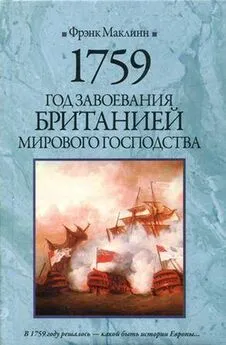
![Ксения Чепикова - Человек, научивший мир читать [История Великой информационной революции]](/books/1059757/kseniya-chepikova-chelovek-nauchivshij-mir-chitat-ist.webp)
